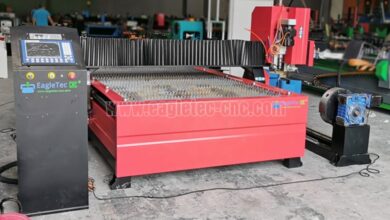How does digital transformation help businesses?

The process of driving organizational change through digital solutions, aimed at improving existing and creating new processes and services. Digital transformation. A complex process with limitless potential or a mere trend?
If you ask us, or any other creator of top-notch digital solutions for that matter, we’ll cast our votes on the potential and opportunities. Here’s why.
Digital transformation – a fundamental change in the way businesses operate and deliver value
Organizational and operational change, adaptability, a reimagination of business processes, value creation, and innovation. It’s not (or at least, it shouldn’t be) about big words, but talking about digital transformation touches on some great ideas.
Driving organizational change with digital technology allows modifying the existing and creating new processes and services.
Digital transformation is the adoption of digital solutions in the company
Businesses take on new challenges, not for the sake of it, but to perform better. Examples of how modern technology supports achieving set goals span across (nearly) all industries.
Read Also: Best Recommended Books to Help Pass the Electrical Power PE Exam
Preventing downtimes
Heavy industry benefits… heavily from the potential of digital solutions when it comes to reducing the unavailability of systems and machinery. Augmented reality can lower production downtimes by up to 50%, translating directly into better results for manufacturing plants.
Retaining knowledge
AR platforms and Learning Management Systems secure the company’s resources and aggregate knowledge. Advanced tools help prevent issues with tribal knowledge when expertise is present solely in the heads of the highly-qualified personnel. In such cases, the next generations of workers can’t fully learn about the position they’re about to take. With the use of digital solutions, expert know-how is available for future employees, even after the generational change occurs.
Efficient training
With AR, manufacturing workers can start working faster than using traditional learning methods. Guided by step-by-step tutorials displayed before their eyes, employees perform tasks accurately and efficiently. Instead of “dry runs” in the classroom, new hires learn in position. Learning-by-doing contributes to consolidating good habits, shortens the training time, and unburdens instructors, who can focus on more complex issues and answer trainees’ questions.
Improving customer experience
A better understanding of customer experience and needs is possible with the application of digital solutions. New means of communication, more interactive approach, gathering, and analysis of data lead to creating better relations with clients. Digital solutions arm traditional businesses with new opportunities, e.g. e-commerce, automation, and big data, allowing companies to prevent customer churn and present the best-tailored offers to clients.
Improving productivity
Employing AR in industrial processes allows decreasing human errors, inevitable in traditional production lines. Once employees gain access to step-by-step instructions, digital tutorials, and real-time communication with experts, up to a 40% increase in productivity can be noted (as proven by the example of AR adoption in Boeing factories). Productivity improves also through the adoption of automation solutions, allowing for ceding repetitive tasks to technology, and leaving human potential free to take on more demanding activities.
Predictive maintenance
Using AR in service operations enables supervision of in-service equipment and machinery, assessing their condition, and determining when maintenance should be performed. Tracking health indicators, performance, and status in real-time is aimed at reducing costs and ensuring continuity of work by avoiding unexpected breakdowns.
With the growing involvement of advanced machinery in industrial processes, continuous production flows require the utilization of predictive tools. AR can be used to spot divergences and abnormalities, undetectable by the human eye, yet indicating a forthcoming disturbance in ongoing operations.
Connectivity
Integration with internal systems enables the adoption of the Industrial Internet of Things to support carried out operations. Interconnected sensors and devices help identify elements requiring inspection or servicing, without the need to disassemble machines to preventively access parts wearing out. Sensors and beacons support professionals in a wide scope of operations, where it’s assessing vegetation in agriculture, improving autonomous vehicles in the automotive industry, or providing medical care in modern medicine.
Increasing profits
Paraphrasing the famous call of Captain Planet, the green-mulleted superhero known from the famous edutainment cartoon series, With your powers combined, I am the profit!
On the slightly more serious side, the combination of areas mentioned above boils down to what enterprises can achieve with the adoption of the right technology. Fewer errors and accidents, reduced interruptions to the manufacturing process, higher level of expertise among staff translate into overall better results.
How to know that the change leads in a good direction?
Can digital transformation be assessed and measured? When do decision-makers know they’ve chosen the right technology, identified the needs properly, and made every effort to leverage the success?
Digital solutions, when adjusted to recognized needs and requirements, enable achieving industry-specific goals. The objectives vary, and applied arrangements should as well. It’s not about introducing technology into companies’ processes just because everyone does it.
Moreover, while focusing on technology and its potential, business entities can’t forget about their workforce. Leaving staff out of the digital transformation process causes concerns among employees who consider technology their competition. Providing support to staff reduces resistance which could threaten the process and allows for achieving set goals as the workforce allies with technology.
Properly chosen and implemented digital solutions can transform the operations towards expected results, making business thrive.

![Fixing the PII [pii_email_76b1e82f53dea6fc1a63] Error Code](https://techdailymagazines.com/wp-content/uploads/2021/10/Fixing-the-PII-pii_email_76b1e82f53dea6fc1a63-Error-Code-390x220.jpg)
![Fixing the PII [pii_email_5b7450b3c52ee3dc0fbe] Error Code](https://techdailymagazines.com/wp-content/uploads/2021/09/PicsArt_09-05-11.28.49-390x220.jpg)


![Fixing PII [pii_email_316cb5e2e59f1ce78052] Error Code](https://techdailymagazines.com/wp-content/uploads/2021/09/laptop-5906264__480-390x220.webp)